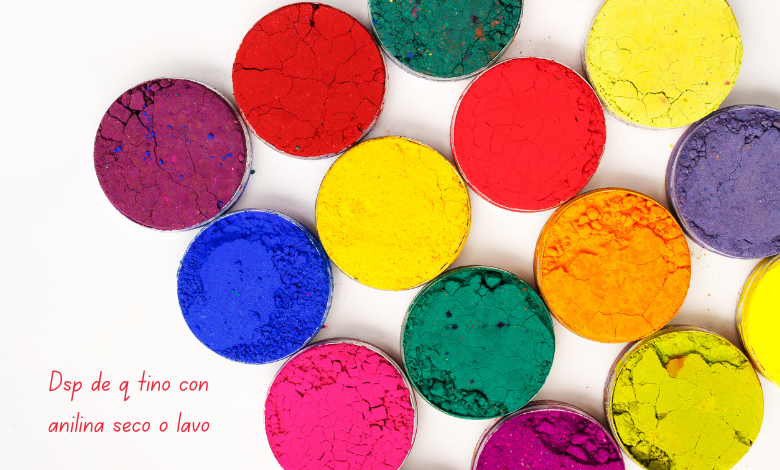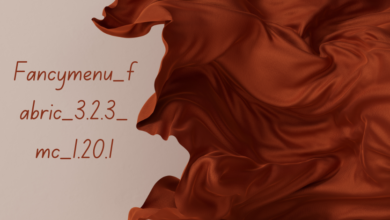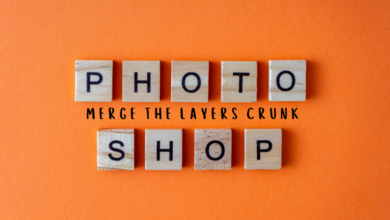Dsp de q tino con anilina seco o lavo: Dry or Wash After Dyeing?

Dyeing fabrics at home is a amusing and innovative manner to breathe new existence into your cloth wardrobe. Among the various dye options available, aniline dye stands out for its colourful colorings and capability to deeply penetrate fabric. However, one question often arises: Should you dry the fabric after dyeing with aniline, or is it higher to scrub it proper away? This article will guide you through the dyeing technique, addressing this common quandary to help you reap the satisfactory consequences dsp de q tino con anilina seco o lavo.
Understanding Aniline Dye
What is Aniline Dye?
Aniline dye is a artificial dye derived from aniline oil, that is an organic compound. It’s regarded for producing wealthy, deep shades that may supply your fabrics a expert end. Originally developed inside the nineteenth century, aniline dyes had been used for various applications, from textiles to wooden staining dsp de q tino con anilina seco o lavo.
History and Uses of Aniline Dye
The history of aniline dye dates again to 1856 when it became first synthesized via William Henry Perkin. Since then, it has revolutionized the fabric enterprise, presenting a huge range of colours that were previously difficult to achieve. Aniline dyes are not handiest used in material dyeing however additionally in developing shiny stains for leather-based and wood.
Types of Fabrics Suitable for Aniline Dyeing
Not all fabric are created same with regards to dye absorption. Aniline dye works exceptional on natural fibers like cotton, wool, and silk. Synthetic fabrics may not take in the dye as efficaciously, leading to uneven or dwindled shades.
Preparation Before Dyeing
Gathering Materials
Before you begin the dyeing procedure, it is important to gather all essential substances. You will need:
- Aniline dye powder
- A large pot for boiling water
- Gloves and a mask for protection
- A timber or stainless-steel stirrer
- A thermometer
- The cloth you want to dye
Pre-washing the Fabric
Pre-washing your fabric is a critical step that must not be skipped. This enables dispose of any oils, dust, or chemical substances that could intervene with the dyeing process, ensuring that the dye penetrates lightly dsp de q tino con anilina seco o lavo.
Safety Precautions When Using Aniline
Aniline dye may be hazardous if now not dealt with properly. Always wear gloves, a masks, and work in a properly-ventilated area to avoid inhaling fumes or coming into touch with the dye, which can purpose skin irritation.
The Dyeing Process
Step-through-Step Guide to Dyeing with Aniline
1.Boil Water: Fill a large pot with water and convey it to a boil. The quantity of water will rely upon the scale of the cloth.
2.Dissolve the Dye: Add the aniline dye powder to the boiling water and stir till absolutely dissolved.
3.Heat the Fabric: Immerse the pre-washed material into the dye bathtub, ensuring it’s absolutely submerged. Maintain the temperature at around 180°F (eighty two°C).
4.Stir Continuously: Stir the cloth constantly to make sure even dyeing. Leave the material within the dye bathtub for at the least half-hour.
5.Check the Color: Periodically raise the cloth out of the dye tub to test the color. Once the preferred shade is completed, eliminate the cloth.
Tips for Achieving the Best Color Results
- Test a small piece first: Before dyeing the entire fabric, check a small piece to ensure the shade is what you assume.
- Keep the fabric shifting: Constant movement enables save you uneven dyeing or blotches.
- Don’t rush: Allow the cloth to take a seat within the dye bathtub for sufficient time to take in the shade absolutely.
Drying or Washing After Dyeing: Which is Better?
The Importance of Drying After Dyeing
Drying the material immediately after dyeing enables set the color, making it less in all likelihood to fade or bleed. This is mainly critical in case you’re aiming for vibrant, lengthy-lasting colorations. Air drying is the favored method, as it permits the material to dry naturally without agitation that could reason the colour to run.
Situations Where Washing After Dyeing is Necessary
In a few cases, washing the fabric right now after dyeing is probably important, particularly if there is extra dye on the cloth. Washing facilitates remove any dye that hasn’t bonded with the fibers, preventing it from staining different objects later. However, washing too quickly can purpose some shade loss.
Pros and Cons of Drying Versus Washing
- Drying Pros: Sets the shade, reduces the risk of fading, lessens the danger of colour bleeding.
- Drying Cons: May depart excess dye at the cloth, which could rub off later.
- Washing Pros: Removes excess dye, prevents future bleeding.
- Washing Cons: Can cause on the spot shade fading, requires careful handling to avoid blotches.
How to Dry Dyed Fabrics
Techniques for Air Drying
Air drying is the gentlest approach for drying dyed fabrics. Lay the fabric flat on a clean floor or hold it in a well-ventilated area out of direct sunlight. Make certain the fabric is unfold out frivolously to save you creases that could lead to uneven drying.
Using a Dryer: Pros and Cons
While the usage of a dryer can speed up the drying system, it also will increase the hazard of color fading and shrinkage, in particular with natural fibers. If you must use a dryer, opt for a low-warmth setting and test the cloth regularly.
Common Drying Mistakes to Avoid
- Avoid direct daylight: UV rays can motive shades to fade quickly.
- Don’t over-dry: Over-drying in a gadget can cause stiffness and capacity shrinkage.
- Watch for creases: Creases can come to be permanent if the material dries in a crumpled role.
When to Wash Dyed Fabrics
Immediate Washing After Dyeing: Pros and Cons
Washing at once after dyeing can assist cast off unabsorbed dye however may additionally reduce the vibrancy of the color. This is a alternate-off that desires cautious attention relying on the preferred final results.
How to Properly Wash Dyed Fabrics to Maintain Color
When washing dyed fabrics, use bloodless water and a mild detergent designed for colored fabric. Wash the material one at a time to save you any potential dye switch to different garments. Avoid wringing the material, as this could purpose distortions.
Tips for Avoiding Color Bleeding
- Use a dye fixative: This helps to fasten within the shade earlier than the first wash.
- Cold water rinse: Cold water allows to seal the dye and reduce bleeding.
- Wash similar shades collectively: This prevents undesirable dye transfer among garments.
Maintaining Color Vibrancy
Best Practices for Long-Lasting Color
To hold your dyed fabric searching sparkling and vibrant, usually wash them in cold water, avoid extended exposure to sunlight, and use detergents mainly formulated for colored fabrics.
How to Prevent Fading Over Time
Fading is inevitable over the years, but you could slow down the procedure by means of storing your dyed fabrics in a cool, dark location and heading off harsh chemicals in the course of cleansing dsp de q tino con anilina seco o lavo.
Products That Help Maintain Vibrancy
There are products to be had, inclusive of shade-safe detergents and material conditioners, which could help hold the vibrancy of your dyed fabric. These products create a shielding layer around the fibers, reducing the fee of coloration loss.
Common Mistakes in Aniline Dyeing
Overdyeing or Underdyeing
One of the most not unusual errors isn’t always measuring the dye powder appropriately, main to overly excessive or too-light colorations. Always comply with the recommended hints for dye-to-water ratios.
Not Following Safety Precautions
Ignoring safety measures when the use of aniline dye can result in critical health troubles. Always wear protecting gear and paintings in a properly-ventilated space to limit publicity.
Incorrect Drying or Washing Methods
Failing to dry or wash the fabric correctly after dyeing can bring about dwindled colours, blotches, or even harm to the cloth itself. Always follow best practices to ensure the longevity of your dyed items.
Troubleshooting Dyeing Issues
What to Do If the Color Doesn’t Take
If the coloration doesn’t take as expected, it could be because of incorrect cloth guidance or not leaving the material within the dye bathtub long sufficient. You can strive re-dyeing the cloth or the use of a dye fixative to enhance coloration absorption.
Fixing Uneven Dye Distribution
Uneven colour distribution can be caused by insufficient stirring for the duration of the dyeing procedure. To restoration this, you could redye the material, making sure to stir it continuously this time dsp de q tino con anilina seco o lavo.
Removing Excess Dye Safely
If you have excess dye in your fabric, soak it in bloodless water mixed with a bit of vinegar to assist set the coloration and remove any free dye debris.
Alternative Dyeing Methods
Other Natural Dyes Compared to Aniline
While aniline is a synthetic dye, natural dyes derived from vegetation and minerals provide a greater green opportunity. These dyes, but, might not produce colorings as vibrant or long-lasting as aniline.
Modern Synthetic Dyes as an Alternative
If you’re seeking out a much wider range of colors and simpler dyeing methods, contemporary synthetic dyes is probably the way to move. These dyes are designed for home use and may be greater person-pleasant than aniline.
Pros and Cons of Using Natural vs. Synthetic Dyes
- Natural Dyes: Eco-friendly, diffused colours, longer dyeing method.
- Synthetic Dyes: Vibrant colours, shorter dyeing time, greater chemical publicity.
Eco-Friendly Dyeing Practices
The Environmental Impact of Aniline
Aniline dye, even as effective, does have environmental downsides. It can be toxic to aquatic lifestyles if now not disposed of nicely, and its production includes chemical substances that can make a contribution to pollutants.
How to Minimize Waste and Pollution
To limit environmental effect, use handiest the amount of dye you want, and remove leftover dye responsibly. Consider the usage of a dye bathtub more than one times to reduce waste.
Sustainable Alternatives for Eco-Conscious Dyeing
For those concerned approximately the surroundings, consider using plant-based dyes or shopping green artificial dyes that have a decrease impact on the environment.
FAQs About Aniline Dyeing
Common Concerns and Their Solutions
Many human beings worry approximately the toxicity of aniline dye. To mitigate these worries, usually use shielding equipment and paintings in a nicely-ventilated area. Additionally, recollect the use of dye fixatives to save you shade bleeding.
How to Ensure Safety During Dyeing
Safety is paramount whilst running with aniline dye. Always put on gloves, a mask, and ensure you are running in a properly-ventilated space. Never mix aniline dye with different chemical substances except mainly instructed.
Best Practices for Beginners
If you’re new to dyeing, begin with a small mission to get a experience for the system. Follow the commands carefully, and don’t be afraid to experiment with one of a kind strategies to locate what works exceptional for you.
Conclusion
Dyeing with aniline gives a notable manner to feature formidable, lovely colorings on your fabric. Whether you select to dry your fabric after dyeing or wash it proper away, understanding the professionals and cons of each technique will help you reap the fine feasible consequences. Remember to take protection precautions, observe the dyeing technique carefully, and enjoy the creative journey of remodeling your textiles.
FAQs
How do I avoid dye stains on my hands?
Always put on gloves when managing aniline dye to save you stains to your fingers.
Can I mix aniline with other dyes?
Mixing aniline with different dyes may be accomplished, however it calls for cautious managing and testing to make certain compatibility.
How do I fix a shade that got here out too mild?
If the color is just too light, you could attempt re-dyeing the fabric or the use of a dye fixative to beautify coloration absorption.
Is aniline dye safe for all fabric?
Aniline dye works fine on herbal fibers like cotton, wool, and silk. It might not be as powerful on artificial fabrics.
How lengthy should I wait before washing the material after dyeing?
Ideally, wait at the least 24 hours earlier than washing to permit the dye to set well.



